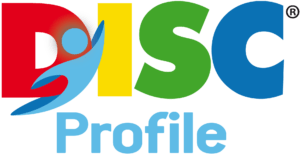
While everyone has a combination of natural and adapted behavioural patterns that makes them unique, people tend to identify more with certain behaviours than others.
DISC® Profiles group behaviours into 4 basic types
- Dominance
- Influence
- Steadiness
- Conscientiousness
The DISC® Profile groups behaviours into four basic types to facilitate a better understanding on an individual’s communication needs. The model is hugely successful, and is the most widely used behavioural model in the world. It is utilised by more than 40 million people across more than 50 countries, including within hundreds of Fortune 500 companies.
Why use the DISC® Profile Leadership Report?
The ability to create and maintain rapport with others is a fundamental skill in leadership and everyday life. The goal of the DISC® Profile Leadership Report is to create personal chemistry and productive relationships. You don’t have to change your personality; you simply have to understand what drives people and recognise options for leading them effectively. The most effective communication skills training involves learning about yourself and others, in order to formulate the most beneficial means of communication amongst employees.
Unlike many other assessments, the DISC® Profile Leadership Report is as much prescriptive as it is descriptive! In other words, the assessment spends as much time teaching you how to improve your own productivity and interpersonal interactions as it does describing your style. We realise that when you invest money and time in an assessment, you want to come away with fast, effective learning strategies that get results immediately.
PART 1 – UNDERSTANDING YOURSELF
- General characteristics
- Your strengths: what you bring to the organisation
- Your motivations (wants) and needs
- Your ideal work environment
- Your behaviour and needs under pressure
- Communication plans
- Potential areas for improvement
- Summary of your style
- Your personalised behavioural style graphs
PART 2 – APPLICATION OF THE DISC® STYLES
- Overview of the DISC® styles
- How to identify another person’s behavioural style
- Behavioural adaptability
- How to communicate effectively with the different behavioural styles
- How to motivate and lead the various styles
Other profiling tools we offer
Leadership Potential Indicator
Emotional Intelligence Questionnaire
360° Feedback Survey


























